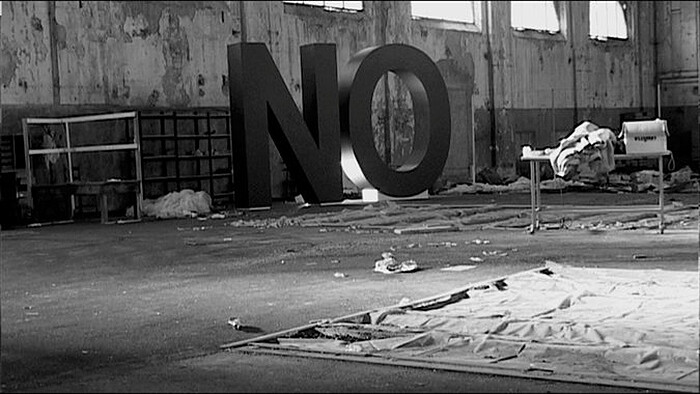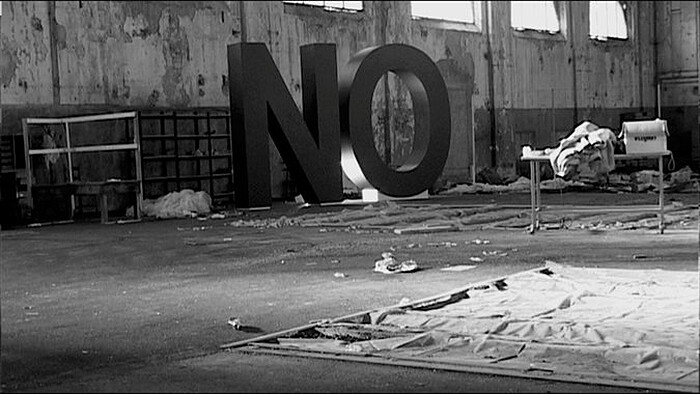For an artist as avowedly controversial as Santiago Sierra, the evidence is hard to locate. Instead of polemical denunciations or excessive apologetics we find an endlessly reiterated testimony to their existence. What is Santiago Sierra? Controversial, the answer comes back, unanimous. Or, almost as often: difficult. But where does this controversy or difficulty take place? Much harder to say. With the exception of the successful campaign to prevent his turning a German synagogue into a DIY gas chamber (a protest “against the banalization of the holocaust”) and his supporting role as the “good-because-antagonistic” relational artist in Claire Bishop’s celebrated attack on Bourriaud’s “bad-because-collective” relatives, there is little in the way of damnation or celebration. And if the latter sometimes arrives well-tempered by furrowed brows, it just as often evinces no such compunction. In fact, Sierra has been on such a run of unadulterated success that the current offering at Team—a road-movie depicting the worldwide travels of his large NO sculpture—grew out of his need to create a work that could travel. Apparently, he wanted to avoid creating the place-specific performative “remunerations” for which he is famous. As he told the magazine ARTPULSE:
“[I]t was too much work, especially when you make, for example, 12 pieces a year. And when you make a piece each time in a different country it’s not only a big effort, but also difficult to hit the nail on the head each time… So, a multi-contextual piece like the “NO” was the solution….”
Yes, sadly, exploitation is often a great deal of work. And though we might hope that art like Sierra’s would be controversial, it isn’t, not really. Any controversy would seem to be largely imagined, ascribed to some as yet scrupulous artworld which simply doesn’t exist. Or, if it is, it is controversial in the way that some paintings are big while others are sculpture, a sort of formal quality that, having arrived, defeats simple references to history by pushing the work into a different category altogether. Santiago Sierra is a great controversy-artist not because his work generates controversy, but because controversy is its institutional description. So described, it need not make serious reference to any actually existing antagonism, so much as smell poorly or look suspicious.
In this respect Sierra is heir to a long line of preferred bourgeois theologians; well-paid, theodicy-deprived, house-radicals grown fat from selling the viscera harvested from a thinly disguised, abstract moralism. That his performances ostensibly sought to make these denunciations more specific, using drug-addicted prostitutes in places where prostitutes were especially drug addicted and prostitutey (Mexico!), or homeless or unemployed people where they were plentiful (lots of places!) never amounted to anything more than a vaguely topical wash on what was basically a Catholic spectacle. When Sierra says capitalism, he really means something more like sin. And like any good firebrand, his performance is tailored to leave his audience feeling equal parts guilty and helpless. At which point everyone is free to run in circles flagellating themselves with giddy abandon. None more so than Sierra, whose statement has become part of the ritual incantations surrounding himself:
“I can’t change anything. There is no possibility that we can change anything with our artistic work. We do our work because we are making art, and because we believe art should be something, something that follows reality. But I don’t believe in the possibility of change.”
I mean, he would say that, wouldn’t he? But then we’ve grown so accustomed to confusing the occult luxury of cynicism with the rhetoric of honesty that we are delighted by this total denial of agency coming from one so intelligent, so mobile, and so rich. What better person to confirm, to our endless relief and gratitude, that there is nothing whatsoever to be done? One whose obvious understanding fails so spectacularly before the basic tests of common sympathy, the rudiments of human solidarity. Thus taken by such grand-Guignol incantations of our hopeless damnation, we’ve run our man ragged. The NO should be seen for what it is: an attempt by an exhausted performer to hone his shtick to the point where he can simply take it on the road; hence the film.
The film, such as it is, is finely textured and criminally simple. The project of the traveling NO itself, however unfortunate for my own momentum, is really very interesting. Not because the sculpture happens to looks particularly good on film—though it does, at times appearing almost like a post-production animation—but because it begs the question of the international so beautifully. If, that is, we can see Sierra’s remunerations as the work of emancipation’s evil twin—locally organized and historically informed acts of vicious exploitation—then the question of how this work travels is significant for the good sister also. If politics, by definition, is local, then it is additionally, by necessity, idiomatic, and Sierra’s fourteen-foot declination might very well be all that can be said in a truly universal tongue. I remain skeptical, but in any case, the end of the journey from abjection to refusal, however long and unappealing, comes as a relief.






